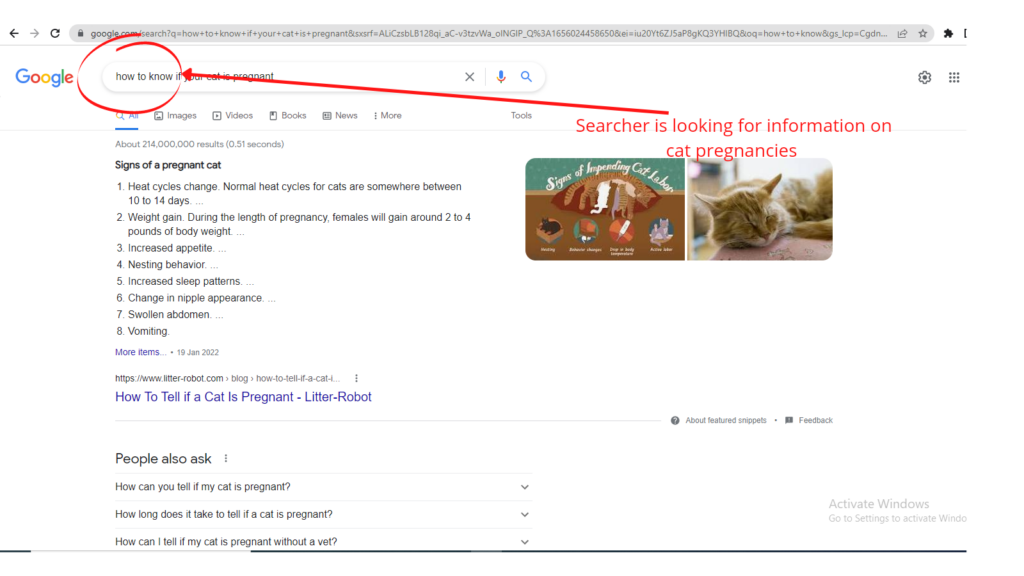10 must-know keyword types for better conversion
When we talk about SEO, it’s hard not to mention keyword research and planning. Keyword research is the process of understanding the specific words your target audience uses when searching for content on the internet.
Keyword planning is a system of analysis, comparison to competitor brands, and prioritization of the content you put out.
What are keywords
Keywords are words or phrases that are associated with particular web content. They are what people type in a search bar when searching for items on search engines. They define what your content is about.

Keyword planning allows you to decide what keywords to use and how to use them for maximum impact. You want to create content that people are searching for, ranks well on search engines, and drives visitors to your site.
Importance of keyword planning
i) Link between content and target audience
Keywords help you understand what your target audience is looking for and tailor your content according to their needs. Creating relevant content increases your SERP ranking which can lead to higher organic traffic to your website.

ii) Helps create a content strategy
Keyword planning will help you align your content so it provides value to your audience and not just crawler bots on search engines. Keyword planning allows you to formulate a keyword map that helps visualize the impact of your content and identify growth opportunities.
iii) Gain competitor insights
Planning involves a healthy amount of looking at competitor statistics and seeing the strategies they are using to drive more organic traffic to their sites and therefore, the gap areas you can improve on.
Types of keywords
Keywords can be summarized into major categories that can be subdivided into specific functions.
Length
These keywords range in size from broader, ambiguous short-tail phrases to more specific long-tail phrases.
1. Short-tail keywords
Short-tail keywords are the most common type of keyword. They are short phrases (one-word phrases) that are used in query searches.
In the example below, the word “cats” is a generic short-tail term that brings up several items. Short-tail keywords are broad and far-reaching and are the basic foundation of the research process.

They are highly competitive, with higher search traffic but a lower conversion rate. Short-tail keywords are typically used when a user is starting their research.
2. Long-tail keywords
Long-tail keywords are keywords with longer phrases (three or more words). They are more specific, therefore narrowing down the search criteria. Because of this, they have lower search traffic compared to short-tail keywords but have a higher conversion rate. Long-tail keywords are used when a visitor is close to making a purchase or is looking for an exact item.
Posting your content with long-tail keywords in the title will reduce the competition significantly, helping your website rank higher on a search engine’s results page.

Fresh vs long-term keywords
3. Fresh keywords
Fresh keywords are phrases that are recently hyped up but tend to die over time. Think of them as viral keywords. They have a peak season and then drop sharply after. You can take advantage of this high-volume search to come up with content that will remain relevant until it isn’t anymore.
This will allow you to attract new audiences, breaking from the existing ones. Be prepared though, for the sharp decline in traffic when the hype surrounding the topic is over.
4. Long-term keywords
Also known as evergreen keywords, these are the keywords that stay relevant for a longer period. The search volumes for this type of content are consistent without major fluctuations. Content that falls under this category would be informative or educational content (like this article!).
The views are consistent and can compound with time. This kind of content ensures you have a steady flow of traffic to your site. Craft your content around more informative pieces and this will add to your authoritative points.
Intent
These are keywords that searchers use during the purchase process. A good rule of thumb is combining long-tail keywords and adjusting them according to the audience’s intent.
5. Informational keywords
These relate to general queries a searcher may have. A good example is a search beginning with the words ‘how’. In this case, searchers are seeking solutions to their problems. Other types of informational keywords are comparisons between two items or the pros and cons of specific items.

6. Transactional/ product defining keywords
These are keywords that relate to a searcher’s intent to purchase items. The keywords used here are very specific and directly correspond to the conversion phase of the funnel. The audience already knows what they want to buy and will use specific terms to search for the product.
Tailoring your SEO keywords according to where your customers are in their journey will help you build content that reaches your target audience and creates opportunities for higher conversion rates and building a sustainable growth plan.
7. Navigational keywords
These are keywords that relate to specific brands or companies. They can also be geo-targeting keywords if you’re looking to attract an audience from a specific location. This might be the easiest keyword planning because there’s already a market for your content. Use navigational keywords if you focus on a specific niche area. Better if you can add a location to it. There’s a lower competition rate and lower search volumes, but if done right, the conversion rates can be quite high.
Primary and secondary keywords
8. Primary keywords
A primary keyword is the main focus word or phrase when creating content. This is the keyword that you want your web content to rank for. For example, the primary keyword in this article is ‘keyword’. Your primary keyword should appear in strategic positions; the title, headings, tags, first line of writing, and throughout the content. For higher ranking, include it in your rich content; infographics, images by description, or the filenames.
9. Secondary keywords
These are keywords that complement primary keywords. They are also known as LSI keywords. They are words associated with the primary keyword, either variations or synonyms. They help in reducing the saturation of the main keywords and help optimize content. They are important because they help in ranking for several keywords, widening the search criteria. They also help search engines contextualize and understand your content better.
Market-Specific SEO Keywords
Market-specific keywords target specific industries, brands, or customers. They are a broad term for customer-specific keywords, product, and competitor keywords. They hold keyword data of niches.
10. Customer-specific keywords
These keywords target customers specifically. They can include specific attributes of a customer, or they can be broader in search. Customer-defining keywords help in creating relevant search connections with an audience that is seeking to purchase your product or service. These types of keywords need you to have a deeper understanding of your audience so you can create authentic content for them.
Bonus: Product and Competitor keywords
These keywords contain specific names of the product niche as well as competitor details. Using product-specific keywords will help you reach a target audience. Competitor keywords can be used to evaluate your competition in the same niche. It is a good strategy to always stay on top of your game by understanding your competitor’s top products or services and how they market them to users. For example, Pepsi might use Coca-Cola as their competitor keyword
Conclusion
Keyword research is an important step in search engine optimization and accounts for a higher conversion rate. When choosing keywords, relevance and usability are important factors. It’s important to know where to place them in your content and the role they play in reaching your target audience.
In this article, we have discussed what keywords are and the types there are. This will help you get an idea about what you want to research before getting on keyword research tools, which we’ll be tackling in our next post. Stay tuned, and remember to enjoy the process!

